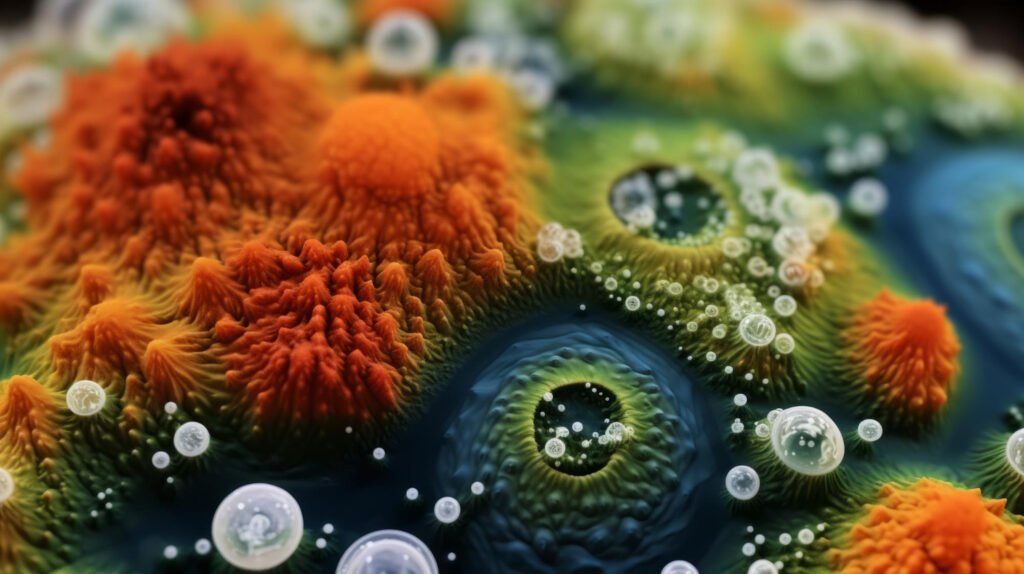
Certain events such as the COVID-19 pandemic as well as people’s increased awareness on hygiene have led to growing interest in Antimicrobial Textiles.
These fabrics are infused with agents that inhibit the growth of bacteria, viruses and other microorganisms — henceforth providing a new level of protection and comfort.
By reading further into the blog, the Advantages and Applications of Antimicrobial Textiles will be understood better.
2. WHAT ARE ANTIMICROBIAL TEXTILES ?
In simple words- Antimicrobial Textiles are as the name suggests — provides protection against bacteria.
These are engineered fabrics that possess the ability to suppress the growth and spread of microorganisms .
This is achieved by mainly 2 methods :-
- By directly incorporating antimicrobial agents into the fibers.
- By applying antimicrobial agents as a coating or finish.
Like most products produced; such agents can be both natural and synthetic.
After getting the introduction and gaining better knowledge about it let us now see the Advantages, Applications and Advancements of Antimicrobial Textiles.
3. ADVANTAGES OF ANTIMICROBIAL TEXTILES
3.1. Enhanced Hygiene :
The primary advantage of Antimicrobial Textiles is their ability to inhibit the growth of bacteria, viruses and fungi; thereby reducing the risk of cross-contamination.
3.2. Odour Control :
If there is no continuous growth of bacteria and fungi, there won’t be odour, hence keeping the fabric fresh and odour free for a longer period.
3.3. Prolonged Durability :
Microbes can degrade textilesand lead to deterioration of their structural integrity. Antimicrobial textiles actively protect against such microbial attacks leading to longer lifespan of the fabric.

4. APPLICATIONS OF ANTIMICROBIAL TEXTILES
4.1. Healthcare and Medical Textiles :
Antimicrobial Textiles are extensively used in the healthcare industry where hygiene and prevention of cross-contamination are of utmost importance.
Such fabrics are used in hospital gowns, bed linens, curtains, uniforms, medical upholstery, mask and Personal Protection Equipment (PPE) and wound dressing.
4.2. Apparel and Sportswear :
The very characteristic of Antimicrobial Textiles being odour free and preventing growth of bacteria and microbes makes it one of the most suitable fabrics to be used for sportswear as well as other clothings.
It will make the clothes stay and smell fresh for a longer duration of time.
4.3. Home Textiles :
Bedsheets, pillow cases and towels are also treated with antimicrobial agents which help it stay fresh and clean for a longer period of time hence reducing the frequency of washing it.

4.4. Public Spaces and Transportation :
After increased awareness on hygiene in public places, Antimicrobial Textiles are being used in upholstery, carpets and curtains in public places such as hotels, offices and even public transportations.
5. ADVANCEMENTS IN ANTIMICROBIAL TEXTILES
The field of Antimicrobial Textiles has potential and will be used and evolved more and more in the upcoming future with ongoing research and development leading to new innovations.
For now let us see into some of the notable advancements made so far.
5.1. Sustainable Solutions :
Researchers are exploring eco-friendly antimicrobial agents derived from natural resources like plant extracts and essential oils.
Such sustainable options offer effective antimicrobial properties while minimising environmental impact.
5.2. Smart Textiles :
By integrating antimicrobial properties with smart textile technology , fabrics can be designed to sense and respond to the presence of microorganisms by releasing antimicrobial agents only when required , therefore optimising their effectiveness as well as lifespan.
5.3. Wash-Durable Treatments :
One of the focuses in ongoing research is improving the wash durability of antimicrobial properties.
Researchers and scientists are developing methods to ensure that the antimicrobial properties of treated textiles remain effective even after repeated washing and maintaining their hygiene benefits over time.
After looking into the 3 important ‘A’s (Advantages, Applications, Advancements) of Antimicrobial Textiles we see how this is revolutionary in the field of Textile industry.
Not only is it practical but also is sustainable leading to a more safe and hygienic environment for all as well as the future.

